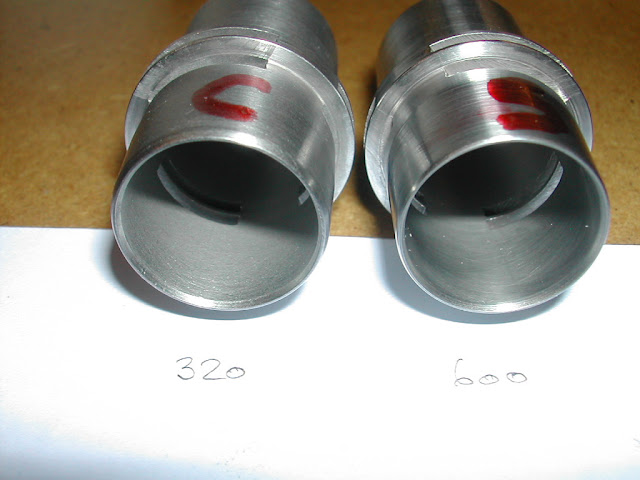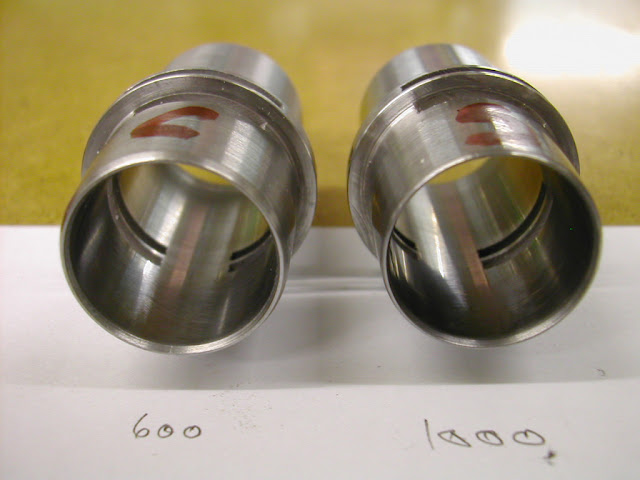Hi Chris - bore size is not so much relevant as is the surface finish inside before lapping.
I have four grades 240, 320, 600, and 1000. The 240 is rarely used but does come in handy if there are any tooling marks that are a little too deep.
I usually begin with 320 moving quickly to 600 which does most of the work only using the 1000 for a final 'polish' and when fitting the piston to the liner.
(If I only had one available I'd plumb for the 600 - it would be a bit slow to begin with but not being too coarse will allow a reasonably good finish as it gradually breaks down in size as lapping progresses anyway)
I don't charge the laps ie by rolling it in the powder but prefer to mix a small amount with some light oil to a thin paste and spread a small amount over the lap. When lapping I find a mixture of paraffin and oil (90:10) makes a very good lubricant
I use a three pot cleaning system - three jam jars with enough cellulose thinner in to cover the part. Drop the part in the first jar and give it a swirl. Remove, wipe clean then drop it in the second. That's usually clean enough for the initial checks. Once the first jar becomes too grotty decant it into a larger jar (if allowed to settle it can be recycled later as it's surprising how much you get through) and the second jar now becomes the first and so on - the third jar is used when fitting the piston to make sure it's really clean before trying it in the liner.
Regards - Ramon












